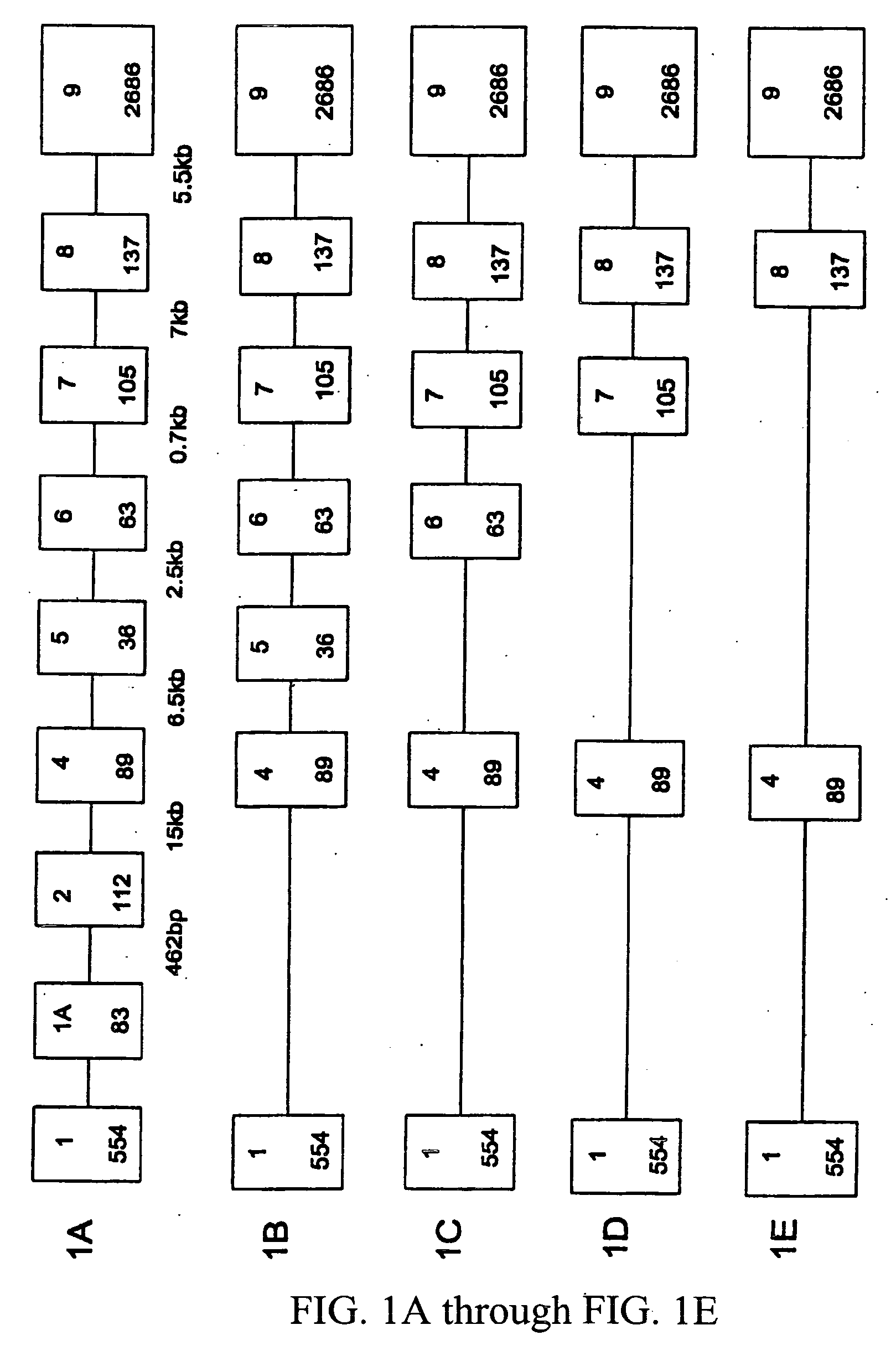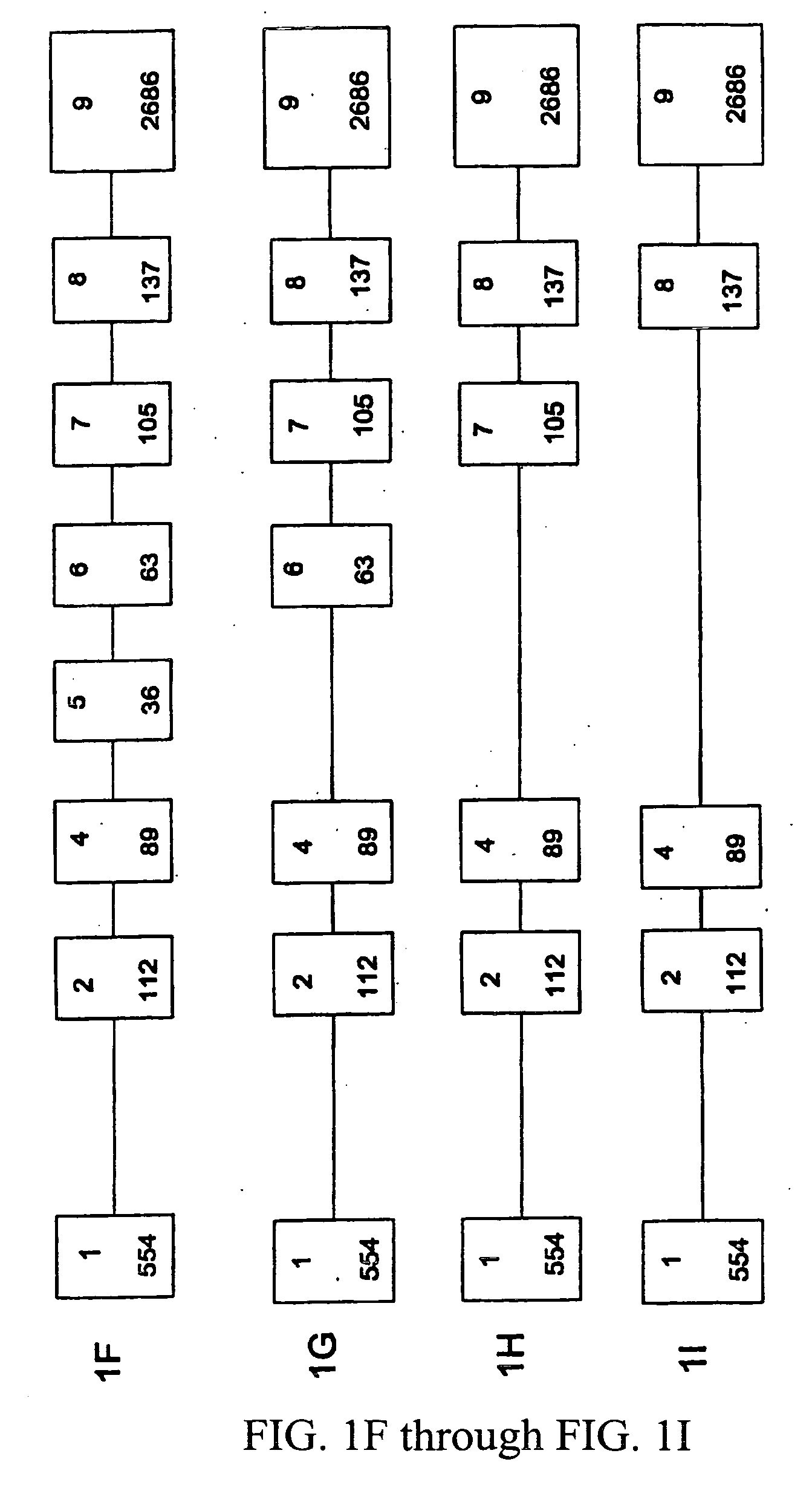Alpha1-3 galactosyltransferase gene and promoter
a technology of galactosyltransferase and promoter, which is applied in the direction of transferases, enzymology, biochemistry apparatus and processes, etc., can solve the problems of limiting the freedom and quality of life of patients undergoing such therapy, shortening the range of acceptable organs for transplantation, and many deaths a year
- Summary
- Abstract
- Description
- Claims
- Application Information
AI Technical Summary
Benefits of technology
Problems solved by technology
Method used
Image
Examples
example 1
[0039] This example describes the identification of the 5′ untranslated region and genomic structure of the porcine α1-3 galactosyltransferase gene.
[0040] A comparison of published sequences for the α1-3 galactosyltransferase cDNA (Hoopes et al., supra, Katayama et al., supra; Sandrin et al., supra; and Strahan et al., supra) revealed a divergence in the 5′ boundary. Some of these cDNA contain putative 5′ untranslated sequences that bear a high (>70%) homology to murine sequences identified as the second exon, and it was hypothesized that this region is conserved as an exon in the porcine genome as well.
[0041] Further 5′ sequence was cloned using 5′ RACE, and the putative transcription initiation site was probed by S1 protection assay, using standard protocols. Briefly, a plasmid containing the upstream genomic sequence was digested with restriction enzyme, Pml I, and linearized. The DNA was phosphorylated with shrimp alkaline phosphotase, heated to inactivate the enzyme, and then...
example 2
[0047] This example describes the identification of the 5′ untranslated region and organization of the murine α1-3 galactosyltransferase gene.
[0048] To identify the 5′ and 3′ ends of α1,3GT gene transcripts, 5′- and 3′-RACE procedures were performed using the Marathon cDNA Amplification Kit (Clontech) with the spleen poly A+ RNA of Balb / C adult male as template. To identify exon-intron boundaries or 5′- and 3′-flanking region of the transcripts, Murine GenomeWalker libraries were constructed using the Universal GenomeWalker Library Kit (Clontech) with Balb / C genomic DNA.
[0049] The results of these experiments revealed several genomic sequences, which are set forth at SEQ ID NOs: 17-25. The deduced 5′ untranslated nucleotide sequences are longer by 56 bp than previously reported (Joziasse et al., J. Biol. Chem., 267,5534-41 (1992). The relative intensity of Luciferase activity by the pGL3 / 1280 construct was 15-fold higher than that of pGL3-Basic. The 3′-RACE revealed an extended 3′...
example 3
[0051] This example describes the identification of the organization of the human and Rhesus monkey α1-3 galactosyltransferase untranslated pseudogene.
[0052] Working from published partial sequence of the human α1,3 GT ninth exon, primers were designed to identify the start and end of the gene by 5′-RACE, 3′RACE and rtPCR, as described above. Several alternate transcripts were identified, and these are set forth as SEQ ID NOs:27-34. The sequences were compared to those of other species employing a formula based on the consensus motif of the splicing acceptor junction: total number of pyramidines plus 1 (for a branched A) among forty nucleotides per junction. Intron exon boundaries were confirmed as discussed above (see SEQ ID NOs: 35-42). The organization of the alternative splicing patterns observed is indicated in FIG. 3.
[0053] Using similar techniques, primers were designed based on a partial published sequence (Genbank Accession No. M73306) having homology to exon 9. Initially...
PUM
| Property | Measurement | Unit |
|---|---|---|
| time of survival | aaaaa | aaaaa |
| genomic structure | aaaaa | aaaaa |
| size | aaaaa | aaaaa |
Abstract
Description
Claims
Application Information
 Login to View More
Login to View More - R&D
- Intellectual Property
- Life Sciences
- Materials
- Tech Scout
- Unparalleled Data Quality
- Higher Quality Content
- 60% Fewer Hallucinations
Browse by: Latest US Patents, China's latest patents, Technical Efficacy Thesaurus, Application Domain, Technology Topic, Popular Technical Reports.
© 2025 PatSnap. All rights reserved.Legal|Privacy policy|Modern Slavery Act Transparency Statement|Sitemap|About US| Contact US: help@patsnap.com



